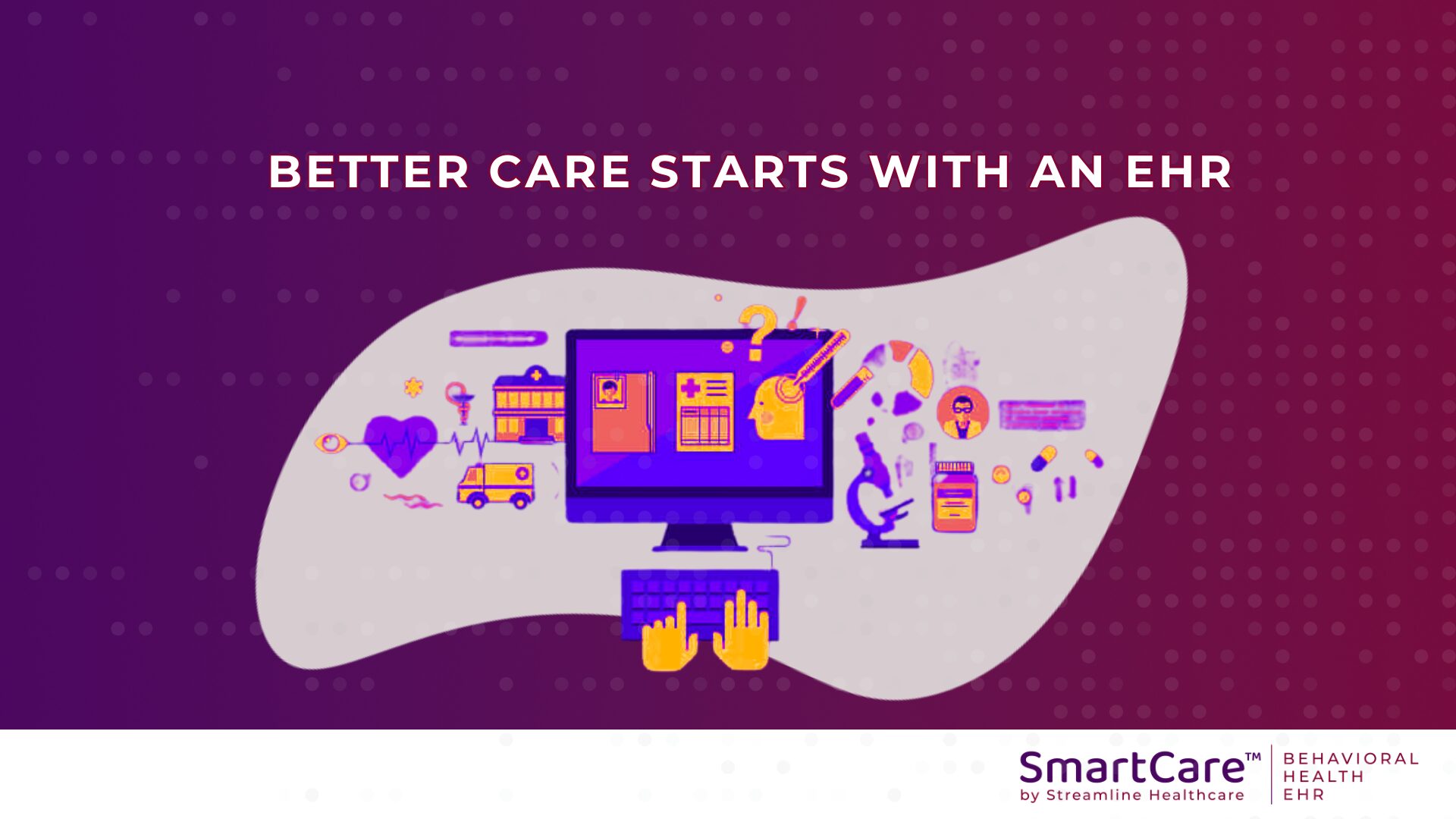Improve Care Coordination with Healthcare Integration
When people are seeking medical care, no matter what their symptoms, they tend to start in the same place, their primary care physician. But often, due to the nature of their illness, or shame about talking about mental illness, they do not receive all the treatment they need from their primary care provider. According to the American Psychiatric Association, many clients need behavioral care specialists. “As many as 40% of all patients seen in primary care settings have a mental illness…” In many situations, mental illness is not the primary reason for the visit. If not addressed or realized by their primary care physician, symptoms can progress and get worse requiring additional services and more intensive levels of care.
While the primary care physician first sees an individual, learns their history, and gathers important information on his or her medical background, at times the clinician is not able to provide comprehensive treatment, due to a lack of resources, time, or simply because the treatment the client needs is not their specialty. Their client is often referred to another practice for treatment, which means it is critical that all health information is shared between providers, as missing data could result in a lapse in care. For clients who need both primary and behavioral healthcare, coordinating these efforts under one umbrella can vastly improve overall client care.
There are a variety of ways to achieve this goal. In this blog, we share a few key aspects of providing clients with integrated health care.
Ways to Integrate
While it is widely understood that integration of health services will have a positive impact on client care, the actual implementation of the integration between behavioral health and general medical services has long been the focus of extensive research, planning, and education. Many models that would address the needs of integrated care have been studied, and each model is unique. Different models utilize the care of managers, behavioral health consultants, behaviorists, or consultations. With so many options, it’s hard to know which is the most effective. But one report by the American Psychiatric Association Academy of Psychosomatic Medicine recognized the Collaborative Care Model as excelling above others when it comes to improved outcomes, controlled costs, and improving the satisfaction of care. It sets itself apart by paying particular attention to accountability and quality improvement, and is the only evidence-based model of its kind.
While the report covering this model is incredibly in-depth, there are four essential elements that should be highlighted. The Collaborative Care Model includes provisions of care that are:
- Team-driven
- Population-focused
- Measurement-guided
- Evidence-based
Use of this method would result in a team that is focused on the entirety of their patient population, regardless of an individual patient’s current level of engagement in treatment.
Katie Morrow, Streamline Healthcare Solutions’ Vice President of Compliance, recently gave a presentation called Population Cost Management: Using Data to Improve Care. In this presentation, Morrow outlined a specific process to improve care coordination and utilize data. The four steps were followed by the managed behavioral health organization (MBHO) to find tools that would plug into their electronic health record. These included:
- Analytic Tool Selection Process
- Initial Data Analysis for Planning
- Using data to build a level of care model
- Going live with real-time data-informed population management
Data played a large part in these steps, as well as the use of the EHR to manage that data in a way that was not an additional burden to the physicians using it. According to Morrow, the key to implementing any sort of care coordination is understanding baseline data.
Using Data to Drive Care
One way to successfully coordinate the many facets of client care is to utilize the introduction of big data and predictive analytics in the medical field. The Collaborative Care Model uses data at its core; a Collaborative Care team will utilize measurement-guided patient-centered data to achieve evidence-based care and provide treat-to-target care for each client.
While the potential of big data has been extensively covered, it can be difficult to find a practical use for it in practices. In her presentation, Morrow spoke about practical places where managers can utilize the power of data to improve the efficiency of care coordination.
Morrow also discussed her experience working with a Michigan Medicaid managed behavioral health organization to improve the efficiency and effectiveness of the care coordination process. To do this, the management team used the above four-step process to find and implement analytic tools for care coordination that plugged into their electronic health record (EHR). In utilizing data and their EHR, they were able to see multiple positive results, including a decreased time for access to care and increased consistency in care.
Together, this team utilized measurement-guided patient-centered outcomes to guide the delivery of evidence-based care in order to achieve “treat-to-target” clinical goals for each patient.
Not only can these methods be used to coordinate behavioral and medical care, they can also help integrate other key specialties, to provide the best possible care for clients. There have been studies integrating mental and pediatric care, as well as primary care and substance abuse treatment, and establishing Certified Community Healthcare Clinics is another way in which we can expect to see organizations working toward an integrated structure. According to Ted Wright, Streamline’s VP of Sales of Marketing, “This type of client-focused attention will improve the overall health of the Medicaid population by integrating primary care, establishing evidence-based practices, and actively coordinating services outside of their four walls.”
Wright goes on to say that integrative care will soon become the norm, and treatment silos will become a thing of the past.
When a client walks into a medical setting, no matter their illness or complaint, they should expect to receive the highest level of care possible. If integrated care can be provided under one roof, the client benefits, costs are lowered, and efficiency grows. Utilizing data in EHR systems is a useful way to create a wide umbrella for treating all clients.




